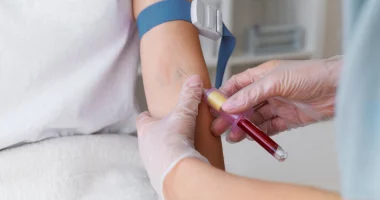Balantidiasis is a parasitic infection led by the protozoan Balantidium coli. This organism primarily infects the large intestine of humans and other mammals, leading to gastrointestinal symptoms like abdominal pain, diarrhea, and sometimes dysentery.
Balantidium coli is unique among human intestinal parasites because it is the only ciliate known to infect humans. The infection typically occurs through ingestion of contaminated water or food containing cysts of the parasite.
Balantidiasis is more prevalent in places with poor sanitation and where pigs, the primary reservoir host, live in close proximity to humans. Sanitation practices, proper hygiene, and safe food handling are essential for prevention.
Symptoms
Symptoms of Balantidiasis can vary depending on the severity but commonly include:
- Diarrhea: Often watery or with mucus, sometimes containing blood.
- Dehydration: Especially in cases with prolonged diarrhea.
- Abdominal pain: Tenderness and cramping in the abdominal region.
- Nausea and vomiting: Particularly in more severe cases.
- Weight loss: Due to decreased appetite and nutrient absorption issues.
- Fever: Occasionally present, indicating an inflammatory response.
- Dysentery: Severe diarrhea with blood and mucus in stool, in more severe infections.
It’s important to note that some individuals infected with Balantidium coli may show no symptoms (asymptomatic carriers), while others may experience more severe gastrointestinal issues. Prompt medical attention is necessary if symptoms persist or worsen.
Causes
Balantidiasis is led by the ingestion of the cyst form of the protozoan parasite. This parasite primarily infects humans through the consumption of contaminated food or water. Cysts of Balantidium coli are resilient structures that can survive in the environment for extended periods, particularly in places with poor sanitation practices. Contaminated food items, like vegetables and fruits washed with contaminated water or improperly cooked pork, which can harbor cysts, serve as common transmission routes. Additionally, direct fecal-oral transmission can occur in settings where hygiene standards are low, allowing for the transfer of cysts from infected individuals to others.
The primary reservoir host for Balantidium coli is the pig, which can shed large numbers of cysts in its feces. Human infection often occurs in regions where pigs and humans live in close proximity, facilitating the transmission of the parasite. Factors like inadequate sewage disposal, lack of clean drinking water, and poor personal hygiene practices contribute significantly to the extent of Balantidiasis in endemic areas. Proper sanitation measures, including safe handling and thorough cooking of pork products, as well as improved access to clean water, are crucial for preventing the transmission of Balantidium coli and decreasing the incidence of Balantidiasis.
Treatment
The treatment of Balantidiasis typically involves the use of specific antibiotics effective against Balantidium coli, like metronidazole or tetracycline. These medications work by eliminating and targeting the parasite from the gastrointestinal tract. Metronidazole is often the first-line treatment choice due to its effectiveness against protozoa like Balantidium coli. Tetracycline can also be used alternatively or in combination with metronidazole, especially in cases where there may be resistance or intolerance to metronidazole. Treatment duration usually lasts around 5 to 7 days, based on the seriousness of the infection and the response to therapy.
In addition to antibiotic treatment, supportive care may be necessary to manage symptoms like dehydration, diarrhea, and abdominal discomfort. This includes ensuring adequate hydration through oral rehydration solutions or, in severe cases, intravenous fluids. Anti-diarrheal medications may be recommended cautiously to alleviate symptoms, although their use should be supervised by a healthcare provider to avoid prolonging the infection.
Regular monitoring and follow-up are essential to assess the response to treatment and to ensure complete eradication of the parasite. In cases of recurrent or persistent Balantidiasis, further investigation and alternative treatment approaches may be required under the guidance of a healthcare professional.
Diagnosis
Diagnosing Balantidiasis typically involves several approaches to confirm the presence of Balantidium coli in the patient’s gastrointestinal tract:
- Stool Examination: The primary method for diagnosing Balantidiasis is examining stool samples under a microscope. A stool sample is collected and analyzed for the existence of trophozoites (the active form of the parasite) or Balantidium coli cysts. Special staining techniques, like trichrome or iodine stains, may be used to enhance the visibility and identification of the parasites.
- Symptoms and Clinical History: Clinical evaluation plays a crucial role, especially in endemic areas or in patients with suggestive symptoms like abdominal pain, diarrhea, and possible exposure to contaminated food or water sources. A thorough medical history, including recent travel history and dietary habits, can provide important clues for diagnosis.
- Serological Tests: In some cases, serological tests may be used to detect specific antibodies against Balantidium coli in the blood. However, these tests are less commonly used than stool examination and may not be as reliable for diagnosis.
- Endoscopic Examination: In severe or complicated cases, where direct visualization of the colon is necessary, endoscopic examination (colonoscopy) may reveal characteristic ulcerations or lesions caused by Balantidium coli infection. Biopsy samples taken during the procedure can verify the existence of the parasite.
Prompt and accurate diagnosis of Balantidiasis is crucial for initiating appropriate treatment and preventing potential complications associated with untreated infections, like chronic diarrhea and nutritional deficiencies.
Prevention
Preventing Balantidiasis mainly includes adopting good clealiness and sanitation practices. This includes thoroughly washing hands with water and soap, particularly before handling food and after utilizing the toilet. Ensuring safe drinking water and properly washing and cooking vegetables and fruits can decrease the chance of ingesting Balantidium coli cysts from contaminated surfaces.
In regions where pigs are prevalent, avoiding the consumption of undercooked pork products is essential, as pigs serve as the primary reservoir host for Balantidium coli. Improved sewage disposal systems and maintaining clean living environments also play critical roles in preventing the transmission of Balantidiasis. Educating communities about these preventive measures and promoting public health initiatives can significantly decrease the incidence of this parasitic infection.
Summary
Balantidiasis is a gastrointestinal infection caused by Balantidium coli, transmitted through ingestion of contaminated water or food-containing cysts. Symptoms include diarrhea, abdominal pain, and occasionally dysentery. Diagnosis involves stool examination for cysts or trophozoites, with supportive clinical evaluation and sometimes serological tests.
Treatment typically includes antibiotics like metronidazole or tetracycline, alongside supportive care for symptoms and hydration. Prevention strategies focus on personal hygiene, safe food and water practices, and avoiding undercooked pork. These measures are crucial in endemic areas to reduce the transmission and impact of Balantidiasis.









